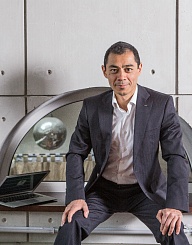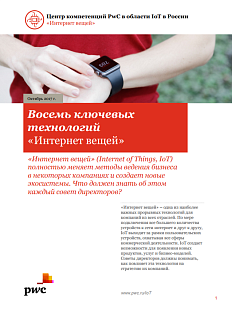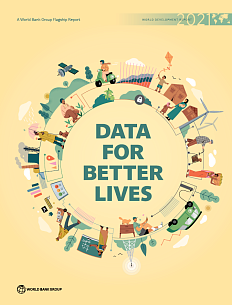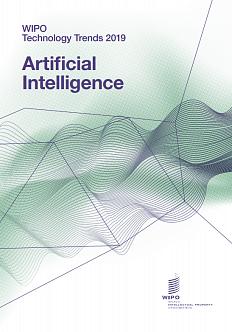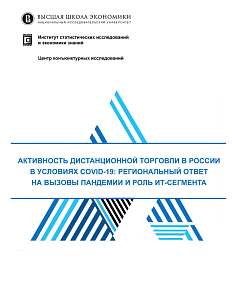Is it too early to talk about artificial intelligence (AI) when we don’t even understand how our own brains work?
No, on the contrary. Initially, such systems were conceived as an attempt to create a simple model of our understanding of how a natural neural network operates. But now, as neural networks have become more complex, we are observing phenomena that we never even imagined before. Some processes in artificial neural networks can be compared with intuition, some with subconsciousness, and others with dreams. And this, in my opinion, is helping us to get closer to understanding how our brain works.
When will we be able say that AI has started to catch up with human intelligence? When will it be able to recognize and understand human speech?
It can already recognise speech fairly well, sometimes even better than people. And it can also synthesize speech, too. In some cases it can pass the Turing Test (an empirical test whose goal is to determine whether a machine can think — Ed.). If you are asking about AGI (artificial general intelligence, also called ‘strong’ artificial intelligence, which is capable of successfully carrying out mental tasks like a human — Ed.), then such systems may appear in the second half of this century, around 2050. At a minimum, this will require the creation of artificial neural networks that are comparable in their complexity to the biological neural networks in the human body. That is, they will contain about 100 billion neurons. And even if we create artificial neural networks on this scale, it will not mean that we have created artificial general intelligence.
But the development of AI also entails problems. For example, a Tesla self-driving car has already been involved in a fatal accident, and an Uber self-driving car ran over a cyclist. These events have raised questions: who is responsible for these tragedies?
At the moment, these systems are being treated like pets from a legal perspective. Who is liable for damages if a dog bites a neighbour? The dog owner is. One approach is to assign legal liability for damages to the owner of the device, regardless of whether or not he or she was physically in the car. It is the owner’s decision to operate the car in self-driving mode. But this is current practice, and is likely to change.
In general, there is an opinion that at some point the line between biological beings and technical entities will be erased. Most biological people will have artificial components, including organs, chips, and built-in devices that will help us to cope with diseases and will improve our abilities. Conversely, technical devices will incorporate parts that have been built using natural DNA and natural cells with mitochondria, etc. It is possible that the law will determine the percentage of living cells in a being that endows that person with rights and responsibilities. For example, a person with 80 % natural cells or artificial beings incorporating a small number of living cells will not be considered subject to the law. Accordingly, other biological beings will be responsible for them. There is an opinion that holds that these major shifts in the world may happen after 2045–2055.
The creation of a truly intelligent AI may lead to the death of mankind. This is what Stephen Hawking, one of the world’s most respected scientists, believed. He said that «the development of full artificial intelligence could spell the end of the human race.» Do you agree? How can this be avoided?
This is an inevitable process. By creating antibiotics, we have also created bacteria that are very resistant to medication. By creating more sophisticated neural networks, we may also be creating neural networks that may become hostile to humans. It is believed that if the singularity is reached, neural networks will evolve at an even faster rate. This means that people will, in principle, be defenceless against the capabilities of more perfect beings. Many believe that the answer to this problem is the creation of more sophisticated neural networks that will observe and predict the hostile behaviour of their ‘brethren’. Let’s say a neural network begins to control a nuclear power plant or it creates conditions where the plant can be operated without human oversight. A separate neural network can be used to monitor the first network’s behaviour. The former will be able to provide timely warning and prevent malicious behaviour.
What are some of the projects or technologies that have interested you lately?
One idea is EVRYTHNG, which is a project to develop a system of radio tags. These allow us to connect our lives and the behaviour of items of clothing, food, and beverages with the online world. Previously manufacturers had no idea how consumers used their products once they left the factory. And companies didn’t understand how they could improve their products. Now, any object can have a digital life, and this turns the entire process of production, marketing, and sales on its head. This is where the future lies. To get there, companies will have to learn how to work with big data.
I generally believe that if a company, whether it be a laundry or a hairdresser or even a multinational company, does not learn how to harness big data, then it will no longer be in business in another 10 years. The only way to survive is to generate, take into account, and understand big data, including through the use of AI. And companies must make the right decisions on the basis of the data.
For example, ABBYY’s smart technologies help banks to automatically assess the risks of issuing loans, choose the best supplier during a tender, and process customer requests for support. Artificial intelligence can do in a few hours what many companies spend days, weeks, and months of their employees’ time performing.
At Findo, we are trying to analyse the behaviour of employees. After all, they are the main asset of any organization. All employees communicate with each other through communication channels, including email and messengers. The entire brain and heart of the company lies in these communications. But previously no one knew how to properly make use of this data, which consists of billions of messages, likes, and reactions. We have created the Yva Pulse (yva.ai) system, which connects to the company’s messages and functions, if you like, as the company’s electronic brain: it understands what employees think, and allows you to predict dismissals and conflicts, analyse why some sellers sell well, and gives you insights into how you can teach the rest.
But then there arises the question of privacy: are employees ready to have their correspondence and behaviour monitored 24/7?
Of course, the issue of confidentiality is pressing. Therefore in our case, for example, the system and servers are located inside the company. In other words, there should be no data leaks. Every company enters into an agreement with each of its employees, which states that all intellectual property created during working hours belongs to the company, and this includes official correspondence and messages. And employees agree to this by signing a contract with the employer.
As a follow-up: do you consider Facebook and Google to be media companies, though they may refute this in every possible way? Can corporations with audiences numbering in the many millions influence people’s offline lives?
Any company that delivers content is a media company, and these companies influence readers. Previously, the sources of content were newspapers, radio, and television. And our opinion, whether we liked it or not, was formed in part through them. If 80 % of our attention is now focused on Instagram, Facebook, and so on, then, accordingly, we are affected by what is published in our feeds from these services. The main question is: what’s in a feed? Posts by other people. Being social animals, people have a vital need for communication. While we previously exchanged opinions in the kitchen and lounges, now our discussions take place in social media feeds. But the people online are the same people who are around us. And it is important for us to decide how our news feed should be constructed and what should be included in it.
I believe that technological progress cannot be stopped. It represents our desire to improve the quality of our lives. There are constantly going to be problems, and it is vital that society openly discusses them and arrives at quality solutions.
You live half of your life in Silicon Valley in the US and the other half in Russia. What is the difference between the lifestyle of an entrepreneur in the Valley and one in Moscow?
The lives of entrepreneurs are the same everywhere: you think about your product and your team 24 hours a day. But I can say that people in Silicon Valley communicate more. They exchange opinions more intensively. Here the culture of accelerators, like Y Combinator and 500 startups, has taught everyone that if you have an idea, you need to talk about it as much as possible. The sooner that you get your product out to buyers, even if it is just a prototype, then the sooner that you will be able to understand whether anyone really needs what you have come up with. When I am in Russia I often hear: «I came up with something brilliant, but I’m not going to tell you what it is.» The value of an idea is zero. Anything that you can think of has already been thought up by others. It will take two to three years to bring your idea to life, and during that time everything will change on the market. You should therefore do as much as you can to attract customers for your product and to learn the true pain points of your user. Ideally, your business should be structured in accordance with the following priorities: first the buyer, then the team, and next the idea. The product is last.
Have you watched the TV series Black Mirror, which tackles the growing influence of information technology on our lives?
I’ve heard a lot about it, but I only recently saw a few episodes. The series is very well done. However, in my opinion, it is pretty depressing. The function of technology should be to help people, and not the other way around. I once participated in a project whose goal was to connect two strangers who might be interested in each other. We called it the Club of Interesting People. Insofar as you are a member of the club, the system will get to know you better, and then it will connect you with an interesting conversation partner via an anonymous call. This is not just about dating. The goal of the communication can be anything. For people, the function of communication is as vital as eating and sleeping. And we were wondering whether AI could connect us with people we might find interesting, but whom we do not know. Similar technologies are coming. The Black Mirror series has even mentioned some of them. I’m sure that in the future technology will be able to help us meet our soulmates.
Can a clone replace a real person? The first episode of Black Mirror second season describes how artificial intelligence could help people cope with the death of loved one`s. Martha’s boyfriend Ash dies in a car accident and friends advise her to create a replica that looks just like the real Ash. The episode inspired several startups, in particular the Replika app, with which users can make a digital copy of a human being. The app was created by former Afisha restaurant critic Eugenia Kuyda
For the last 100,000 years technology has helped people. It’s now hard to imagine what life would be like without electricity, radio, aircraft, and mobile phones. I am optimistic. I’m sure that technologies will continue to improve the quality of our lives. We are people. We will find a common language with robots and with AI in general. And we will be able to live amicably together.
THREE FACTS ABOUT DAVID YANG
1. In 1998–1999, he created the world’s first pocket communication device for teenagers, the Cybiko.
2. He developed his own diet that was based on reduced intake of salt, refined sugar, products containing flour, and animal fats. He published the book Now I Can Eat Anything I Want! The David Yang Diet [Teper’ ya em vsyo, chto khochu! Sistema pitaniya Davida Yana].
3. He is one of the owners of the Moscow clubs Ferrein (formerly FAQ Cafe) and DeFAQto.
Source: SPIEF-2018 Official Magazine


